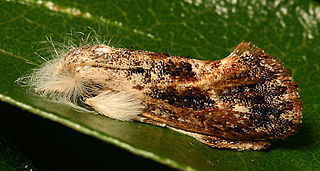
Corona Australis is a constellation in the Southern Celestial Hemisphere. Its Latin name means "southern crown", and it is the southern counterpart of Corona Borealis, the northern crown. It is one of the 48 constellations listed by the 2nd-century astronomer Ptolemy, and it remains one of the 88 modern constellations. The Ancient Greeks saw Corona Australis as a wreath rather than a crown and associated it with Sagittarius or Centaurus. Other cultures have likened the pattern to a turtle, ostrich nest, a tent, or even a hut belonging to a rock hyrax.

Triangulum Australe is a small constellation in the far Southern Celestial Hemisphere. Its name is Latin for "the southern triangle", which distinguishes it from Triangulum in the northern sky and is derived from the acute, almost equilateral pattern of its three brightest stars. It was first depicted on a celestial globe as Triangulus Antarcticus by Petrus Plancius in 1589, and later with more accuracy and its current name by Johann Bayer in his 1603 Uranometria. The French explorer and astronomer Nicolas Louis de Lacaille charted and gave the brighter stars their Bayer designations in 1756.

The South Island robin, is a sparrow-sized bird found only in New Zealand, where it has the status of a protected endemic species. The birds are sparsely distributed through the South Island and Stewart Island/Rakiura, although the distribution is not continuous. The nominate, and the Stewart Island robin are the two subspecies. The species is closely related to the North Island robin, and also to the extremely rare black robin of the Chatham Islands.

Citrus australis, the Dooja, round lime, Australian lime or Australian round lime, is a large shrub or small tree producing an edible fruit. It grows in forest margins in the Beenleigh area and northwards, in Queensland, Australia.

Acrolophus is a genus of moths in the family Acrolophidae, with, typically, great individual variation within species in color pattern, making field identification of many individuals difficult or impossible. It was described by Felipe Poey in 1832.

Phragmites australis, known as common reed, is a broadly distributed wetland grass growing nearly 20 ft (6 m) tall.

Grevillea australis, the Southern grevillea, is a species of flowering plant in the family Protaceae. The only Grevillea to occur naturally in Tasmania, it also grows in highland areas of south-eastern mainland Australia. It has several variations in the wild, and is therefore a very variable species.
Acrolophus acanthogona is a moth of the family Acrolophidae. It is found in Texas.

Acrolophus popeanella is a moth of the family Acrolophidae. It is found in the eastern United States, from New Jersey and Ohio south to Florida and west to Illinois, Nebraska and Texas.
Acrolophus anathyrsa is a moth of the family Acrolophidae. It is found in Guyana.
Acrolophus fervidus is a moth of the family Acrolophidae described by August Busck in 1912. It is found in Costa Rica, Mexico and Texas.

Acrolophus arcanella is a moth of the family Acrolophidae. It is found in eastern North America.
Acrolophus macrogaster is a moth of the family Acrolophidae. It is found in North America, including Arizona.
Acrolophus propinqua is a moth of the family Acrolophidae. It is found in North America, including Alabama, Florida, Georgia, Illinois, Louisiana, Maryland, Mississippi, New York, Ohio, South Carolina, Tennessee, Virginia and West Virginia.
Acrolophus crescentella is a moth of the family Acrolophidae. It is found in North America, including Arizona.
Acrolophus echinon is a moth of the family Acrolophidae. It is found in Mexico.
Acrolophus mimasalis is a moth of the family Acrolophidae. It is found in the West Indies.
Acrolophus noctuina is a moth of the family Acrolophidae. It is found in the West Indies.
Acrolophus pusilla is a moth of the family Acrolophidae. It is found in Colombia.
Acrolophus walsinghami is a moth of the family Acrolophidae. It is found in Puerto Rico.








